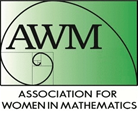Summer 2015
In 2015, 23 rising 9th through 12th students attended the inaugural SIM Camp. SIM Camp introduced students to proofs and applications of math in algebraic topology and number theory. Campers also competed in daily math challenges for prizes. On Friday, Olivia Lee from the Department of Chemistry helped campers see how math relates to chemistry.
What is low dimensional topology?
Topology is the mathematical study of shapes and spaces and how to distinguish them. Someone who studies topology considers two spaces to be the same if you can deform one into the other by stretching and bending; for example, a coffee mug is topologically the same as a doughnut. The reason for this identification is that many geometric problems depend not on the exact shape of an object, but on the way it is put together.
SIM Camp students investigated some of the numerical invariants of spaces that help tell them apart. They proved the classification of compact surfaces, developed strategies for tic-tac-toe on a torus and Klein bottle, and tried to visualize higher dimensional cubes
What is number theory?
Number theory is a broad subject that looks at why natural numbers behave the way they do, and has been called the "Queen of Mathematics," since it is such a foundational subject. Despite the simplicity of the natural numbers, many seemingly simple problems in number theory are unsolved. For example, the Goldbach Conjecture states that every even natural number larger than 2 is the sum of two prime numbers. This conjecture was first stated in 1742, but it is still not known whether it is true.
SIM Camp students learned the basics of proofs and modular, or "clock" arithmetic and enjoyed encrypting and decrypting messages using ciphers.
About Us
Organizers
Claire Merriman was the director and program coordinator of the 2015 SIM Camp, in addition to running the number theory and cryptology class.
Michelle Delcourt was an assistant director at the 2015 SIM Camp.
Melinda Lanius was an assistant director at the 2015 SIM Camp and responsible for the algebraic topology curriculum.
Simone Sisneros-Thiry was the assistant program coordinator at the 2015 SIM Camp, and was in charge of organizing the problem of the day sessions, as well as helping throughout the day.
Olivia Lee was the chemistry coordinator for the 2015 SIM Camp. Olivia was a postdoctoral fellow in the Department of Chemistry, and is now Vice President of Technology at Ascending Energy Inc.
Hannah Burson has help with organization leading up to the 2015 SIM Camp. She has previously worked as a camp counselor at MathPath and is a second year graduate student in the department of mathematics.
Additional Volunteers 2015
Santiago Camacho helped with the number theory and cryptology class. He is in his fifth year as a graduate student in mathematics, working in model theory.
Nick Kosar helped with the algebraic topology class. He is a third year graduate student in mathematics studying applied topology.
Vanessa Rivera Quiñones helped with the algebraic topology class. She is a third year student in the department of mathematics interested in adaptive dynamics and differential equations
Elizabeth Field helped with the algebraic topology class. She is a second year graduate student in the department of mathematics interested in geometric group theory and combinatorics.
Kyle Pratt helped with the number theory and cryptology class. He is a second year graduate student in the department of mathematics working in number theory.
Acknowledgements
Jayadev Athreya was the faculty sponsor for the 2015 SIM Camp. He is an Associate Professor at the University of Washington and co-founder of the Illinois Geometry Lab.
Greg Van Hoorn was the community sponsor for the 2015 SIM Camp and a math teacher at Rantoul Township High School.
Sponsors
Support is provided by:
- Office of Public Engagement, University of Illinois for a Public Engagement Grant
- Department of Mathematics, University of Illinois
- Illinois Geometry Lab, University of Illinois
- Association for Women in Mathematics, University of Illinois
- National Science Foundation




